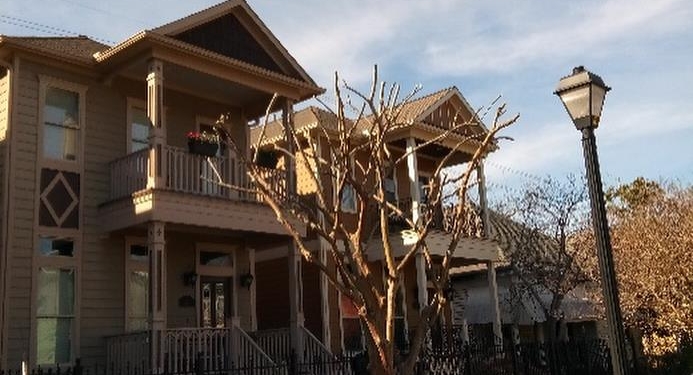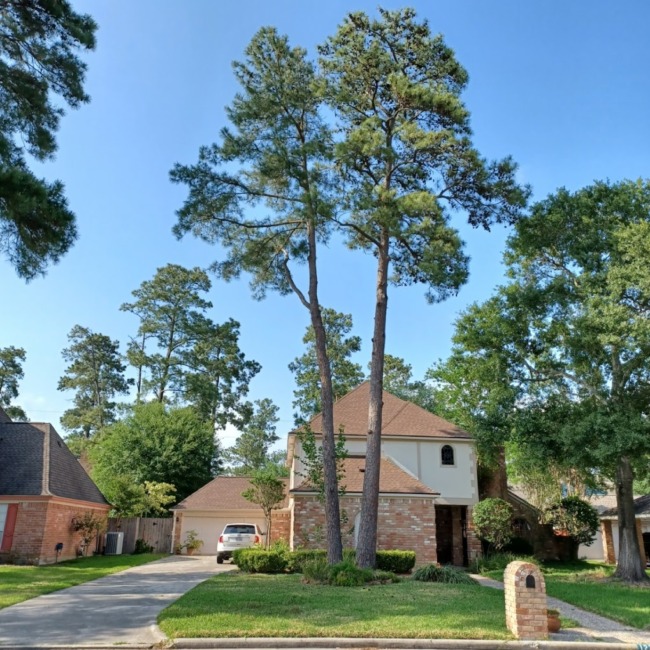Tree Removal - The Woodlands, Spring, Cypress, TX, and Beyond
Tree Removal Near You
A Houston Area Tree Company Serving The Woodlands, Spring, Cypress, and More—Count on Us for Reliable Tree Removal Service.
When disaster strikes, and a tree comes crashing down due to a storm, poor maintenance, or an unexpected accident, you need a reliable and swift response. At Highpoint Tree Care, we are committed to serving the greater Houston area with 24/7 emergency tree removal services by our team of trained and qualified professionals.
What You Can Expect From Us:
A Fully Insured Tree Company
Free Tree Removal Estimates
Communication at Every Turn
Debris Haul-Away for Tree Removal
Dependable and Expert Crew
Our Tree Removal Process
No project is too small for us. We are dedicated to delivering exceptional service as a standard part of our process. Once you receive your free quote for tree removal services, our team will schedule your job and accommodate any specific requests to make the process convenient and enjoyable for you. For emergency tree removal, expedited services are available. We use meticulous tree removal techniques to ensure your property and landscape remain undamaged. On the day of service, you can expect the following from our team:

Tree Assessment
Our team promptly assesses the situation to determine the safest and most efficient removal method while preserving the aesthetics of your landscape and avoiding damage to nearby properties.

Job-Site Preparations
We set up a secure perimeter and begin tree trimming to remove obstructive branches.

Tree Dismantling
Using state-of-the-art machinery, our professionals carefully cut down the tree trunk to eliminate height.

Tree Stump Grinding
We grind the stump to remove it by the root, ensuring complete removal, and leaving your yard or commercial property spotless and ready for your next project.

Job-Site Clean-Up
Last, we haul away all debris, leaving your property clean.
Signs You Need Tree Removal Services

Overcrowded Trees

Dead Trees Attracting Pests

Trees With Cracks or Splits Indicating Rot or Disease

Destructive Roots Harming Your Property

Excessive Leaf Cleanup

Debris Blowing Into Your Pool
Understanding Tree Removal Costs
The cost of tree removal varies based on several factors, including tree size, type, and location. Generally, prices range from $150 to $875:

Cost to Remove Small Trees
Small trees (under 30 ft): Lower cost

Cost of Removing Medium-Sized Trees
Medium trees (30-60 ft): Mid-range cost

Cost of Removing Large Trees
Large trees (over 60 ft): Higher cost
Tree Removal Gallery: Before & After
Frequently Asked Tree Removal Questions
Rooted in Knowledge: Find Answers to Your Tree Care Questions
How can I tell if my tree is diseased or infested with pests?
Common signs of tree disease or pest infestation include yellowing or browning leaves, unusual growths on the trunk or branches, and premature leaf drop. If you notice any of these signs, it’s best to consult with a certified arborist in Houston.
What are the most common tree diseases and pests in Texas?
Some common tree diseases and pests in Texas include Oak Wilt, Emerald Ash Borer, Hypoxylon Canker, and Aphids. We offer diagnosis and treatment services for these issues. Our certified arborists will conduct an inspection and advise you on any present tree diseases affecting your property/curb appeal.
What factors influence the cost of tree removal in Texas?
Factors influencing the cost of tree removal in Houston, TX, include the size and location of the tree, accessibility, whether or not the tree is diseased or dead, and any additional services required, such as stump grinding or debris removal. We provide personalized quotes based on these factors.
What should I do if a tree falls on my property in Texas?
If a tree falls on your property in Houston, Texas, or any of its surrounding cities, we can help you. With our professional tree removal services, you will receive a licensed, insured company available 24/7 for emergency tree removal services. Our team will assess the situation and safely remove the tree. Depending on the circumstances, you may need to contact your insurance company to file a claim for any damage caused by the fallen tree.
How can I protect my trees during severe weather in Houston, Texas, such as hurricanes or droughts?
To protect your trees during severe weather in Houston, Texas, such as hurricanes or droughts, consider regular tree maintenance, proper pruning to remove weak or dead branches, mulching to retain moisture, and installing support systems for vulnerable trees.
Houston’s Top-Rated Tree Removal Company
Posted on
Schedule Your On-Site Tree Removal Quote
We Make Tree Removal Straightforward, Simplified, and Stress-Free

One Tree Company Servicing All of Houston






